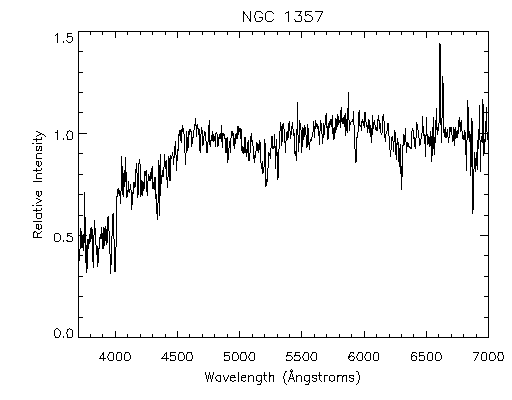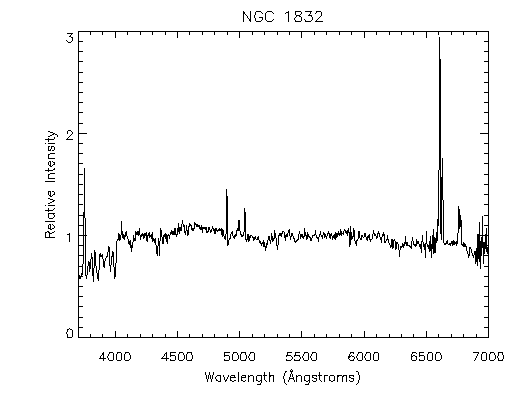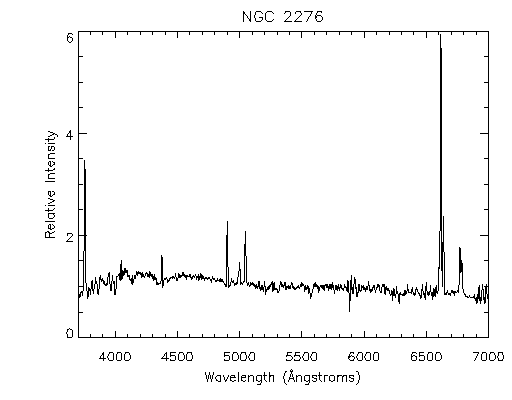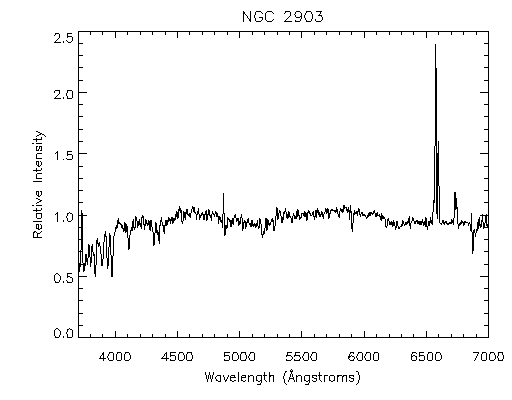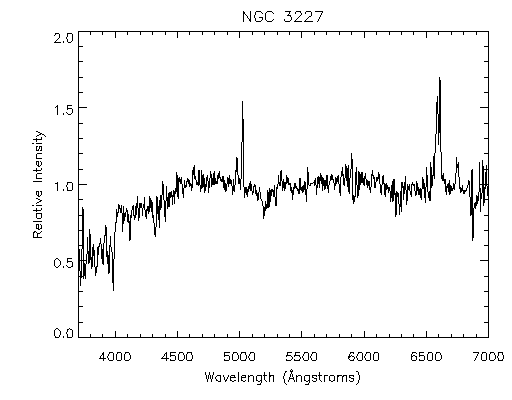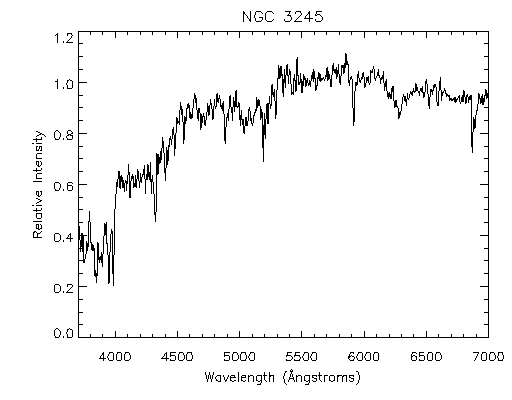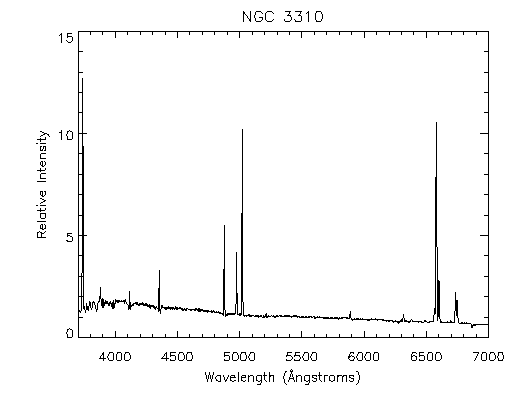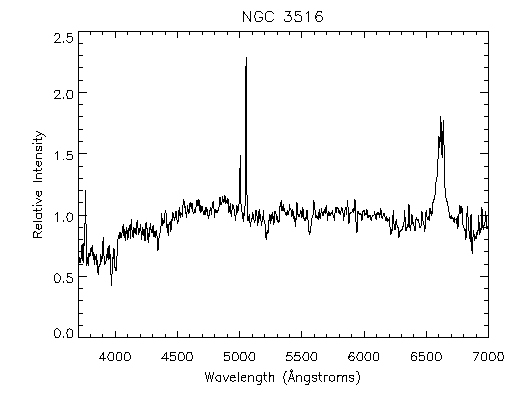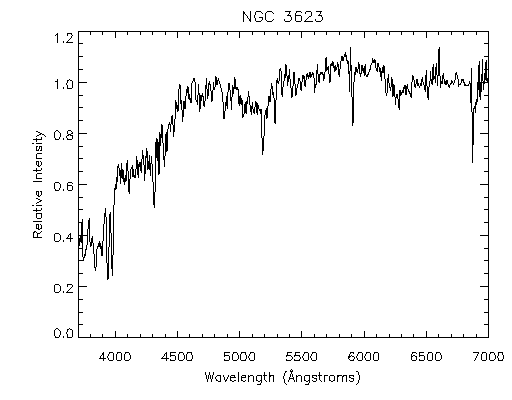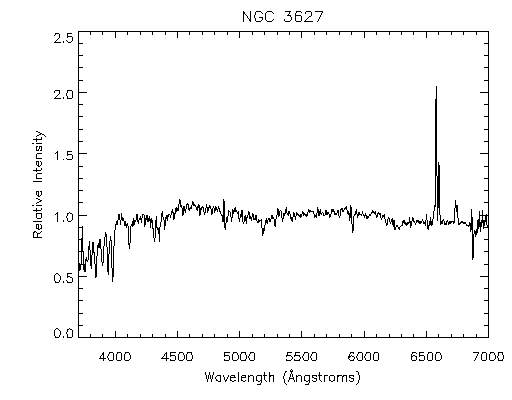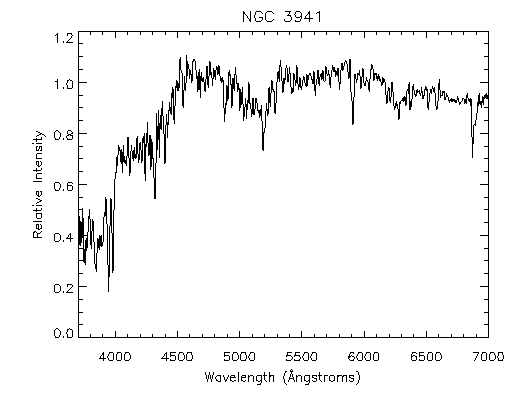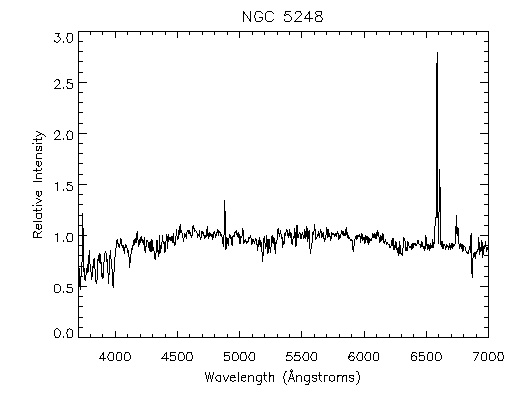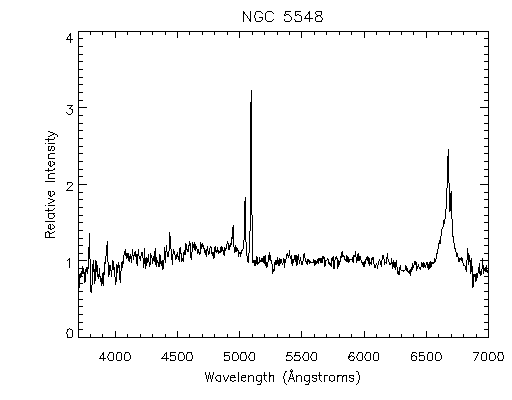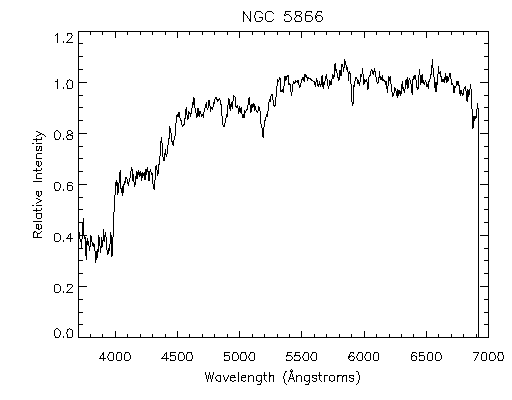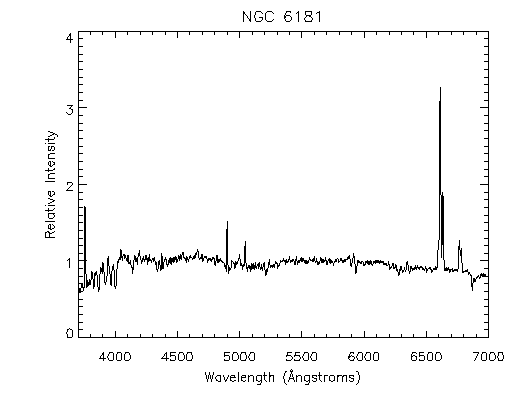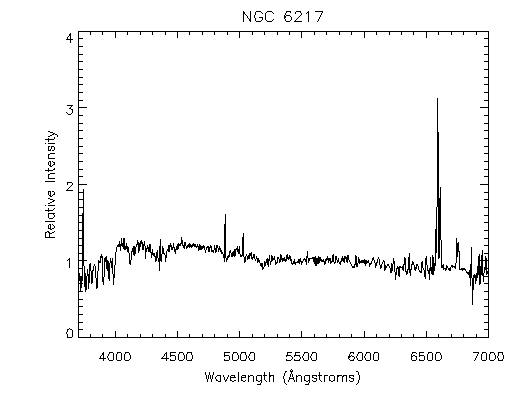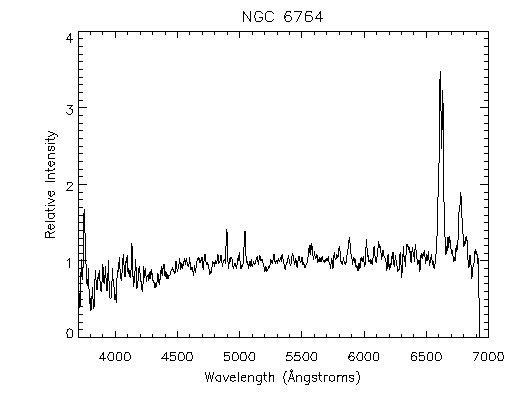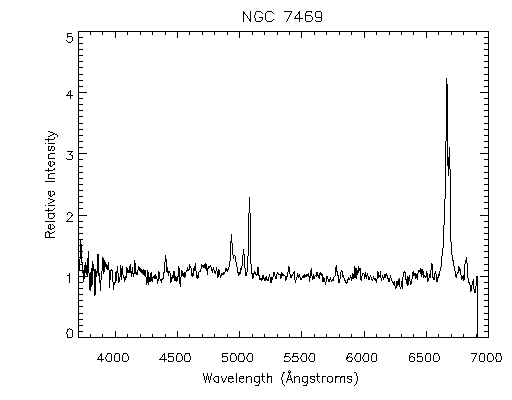THE HUBBLE LAW
|
Images and Spectra of the Galaxies |
Food for Thought
- Most of the emission lines readily apparent in most of these spectra
is due to hydrogen. What kind(s) of galactic objects produce hydrogen
lines in emission?
- The spectra of which galaxies show emission lines? (Look specifically around
the wavelength regions of 6600, 4900, and 4200 Angstroms.)
- The radiation from what kind(s) of objects is dominating the spectra
of these galaxies?
- We will be using the position of the calcium H and K absorption
lines in our calculations of the velocities of these galaxies. What kinds of
stars (specifically, what spectral types) have strong H and K lines?
- The spectra of which galaxies show primarily absorption lines
(no strong emission lines), including strong H and K lines?
(Look specifically around the wavelength region of 4000 Angstroms.)
- The radiation from what kind(s) of stars is dominating the spectra
of these galaxies?
- Which type(s) of galaxies do you expect would show only absorption lines?
- Review your sketches of the galaxies showing primarily absorption lines and
your classification of those galaxies. Are you going to include these galaxies in
your data? Why or why not?
Last updated on:

